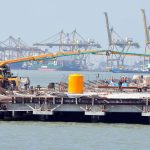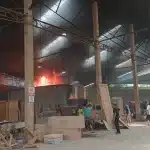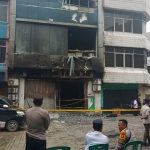Liga Asuransi – Dear readers, how are you? Let’s continue our sharing about risk management and insurance, this time we will be discussing the risks in the oil and gas sector. Especially about risk management and insurance in the field of oil and gas drilling.
As you may know that for Indonesia, the energy sector 2021 continued to record a positive performance during the Covid-19 pandemic.
Especially for the oil and gas subsector, its performance has succeeded in achieving the targets that have been set, such as the Oil and Gas Working Area Offering, gas utilization for domestic and state revenues, especially PNBP SDA Migas.
As a senior insurance broker, I would like to discuss some of the risks faced in the coronation process and the necessary insurance guarantees.
If you are interested in this article, please share it with your colleagues so that they also understand as you do.
As we all know that the exploration and drilling of oil and natural gas require high levels of capital expenditures and are subject to natural hazards and other uncertainties, including those relating to the physical characteristics of oil and gas fields.
Every oil and gas site is exposed to unique risks based on the location, environment, and regulations. For this reason, the oil and gas companies require comprehensive risk assessment and mitigation procedures for each of the sites. It is critical to evaluate all the risks and then develop a control and management strategy that significantly reduces high-risk situations.
There are many uncertainties in oil and gas drilling projects, and there are great risks in every aspect of oil and gas drilling projects. If effective measures cannot be taken, it will easily lead to kinds of accidents that will threaten the safety of operating personnel and environmental pollution even huge loss of government property.
The concept of the overall drilling process is relatively simple. There is a potential reservoir located deep beneath the earth’s surface. To gain access and extract oil or gas, a hole must be drilled through the various rocks, materials, and layers to reach it.
Risk Associated with Oil and Gas Drilling
Oil and gas well drilling activities are associated with numerous hazards which have the potential to cause injury or harm to people, property, and the environment.
These hazards are also a threat to the reputation of drilling companies. To prevent accidents and undesired events in drilling operations it is essential to identify, evaluate, assess, and control the attendant risks.
Technology Risks that oil and gas companies face
The technology in the oil and gas industry keeps on evolving as the players try to reduce risk and increase efficiency and revenues. Despite their many benefits, investing in the new technologies may risk the project flow in terms of budget, projections, and profits.
In addition, failure in the new technology or inability to achieve the intended objective may lead to additional costs and losses, unforeseen repairs, upgrades, etc. For these reasons, the project managers must consider the benefits and limitations of upgrading the existing technologies.
Exploration risks
Several risks are likely to arise during the exploration of the oil and gas facilities. Collapsing structures, accidents, and delays are some of the challenges during the exploration process.
Factors such as workmanship or material defects, changes in the weather patterns, natural disasters, meeting safety requirements, issues with workers, and transportation of materials affect the completion time and budget of the project. Further, exploration risks are higher when there are risky processes such as drilling using explosives.
Understanding the process of oil and gas drilling
Drill Site Preparation
The aboveground infrastructure—pads and access roads—are built, setting up the land for the next step: drilling. From start to finish, everything from traffic plans and designated access roads to noise barriers and safety procedures is carefully planned and monitored according to state and local laws.
Drilling Works
The first step is, that the drill rig is brought to the location using heavy-duty trucks. Then it’s time to build the infrastructure necessary to unlock the oil and natural gas trapped more than a mile below the ground.
In the next step then a well is drilled straight down into the ground beneath the pad. The first stage is to drill what is called the surface hole down to a depth of about 100 feet below the deepest known aquifer. A steel casing is then cemented in place so there is no risk of polluting precious water aquifers.
After this, the “long hole” is drilled and after reaching a depth about 1000 feet above the underground area where oil and natural gas are trapped, the hole is directionally steered to turn it horizontal and out—maybe another mile or two in distance—following the same rock bed.
There’s a phenomenal amount of technology required to keep the hole drilling in the same 10-foot-interval for two miles, but this process allows the well to access oil and natural gas across a longer distance rather than just the energy directly beneath the well pad.
List of drilling equipment
|
|
Cementing and Testing
Once the target distance is reached, the drill pipe is removed, and the steel pipe is pushed to the bottom. This “well casing” is cemented in place. Rigorous tests are performed to ensure the pipe is impermeable before any production of natural gas or oil can occur.
Well completing
Before drillers can tap the oil and natural gas, a perforating gun is typically lowered into the ground and fired into the rock layer in the deepest part of the well, creating holes that connect the rock holding the oil and natural gas and the wellhead.
Fracking
Now it’s time to unlock the oil and natural gas that have been trapped in the rock. Using specialized instruments to monitor pressure and data from the well in real-time, fracking fluid, which is 99.5% water and sand, and 0.5% chemicals are pumped at high pressure through the perforating holes to create paper-thin cracks in the shale rock, freeing the oil and natural gas trapped inside.
The cycles of steps 4 and 5 are repeated, gradually working up the hole until all the lateral length of the wellbore has been fracked. This might be 20 or 30 times—but a process that typically takes only a few days to finish.
Production and Fracking Fluid Recycling
Once fracking is completed, production begins. Oil and natural gas flow up from the well bore and fracturing fluid is then recovered and recycled and used in other fracking operations.
Well abandonment and land restoration
When all the recovered oil and natural gas has been produced, Colorado law requires that the well is permanently plugged, and the land is returned to the way it was before the drilling operations started. The land can then be used for other activities and there is no sign that a well was once there.
The risks of Oil and gas Drilling
Mobilization
The Rig Mobilization / Demobilization job allows you to mobilize rig units to make them ready for drilling and completion jobs and demobilize them when they are no longer needed.
Moving a drilling rig is not a simple task because most of the drilling sites are in remote locations. Every time a well is drilling a drilling rig must be moved in and assembled. After the well is drilled the rig must be cleaned and disassembled and moved off location. Rig mobilization and assembly risks vary depending on how far the rig must be transported.
Accidental damages during mobilization can be caused by:
- Highway crash
- Struck by object
- Explosion
- Caught/compressed
- Falls
- Collision
- Loading and unloading
Drilling and Rigging Up
Rigging up is placing and assembling the various parts of equipment that make up the rig and preparing the rig for drilling.
Rigging down is to take apart equipment for storage and portability. Equipment typically must be disconnected from power sources, decoupled from pressurized systems, disassembled, and moved off the rig floor or even off location.
During the rig up and rig down, some equipment may be handled and set with a crane, rig up trucks, or forklift, depending on the size of the rig. It should be noted that overhead hazards such as high voltage power lines may be present.
During the rig up and rig down the process, there can be failures in installation, for example, the crane is not strong enough to lift equipment and causes the engineers to fall. Or the operator failed to operate the equipment properly.
During The Drilling
Oil and gas well drilling and servicing activities involve many different types of equipment and materials. Recognizing and controlling hazards is critical to preventing injuries and deaths. Several of these hazards are highlighted below. See Standards and Enforcement for more information on evaluation and control requirements.
- Vehicle Collisions
- Struck-By/ Caught-In/ Caught-Between
- Explosions and Fires
- Falls
- Confined Spaces
- Ergonomic High-Pressure
- High-Pressure Lines and Equipment
- Electrical and Other Hazardous Energy
- Machine Hazards
Blowouts and cratering
The explosion is the most infamous rig blowout disaster in recent history.
Blowouts are the most common cause of drilling rig explosions and oil spills. Rig blowouts occur when an uncontrolled oil or gas release from the well occurs due to the failure of pressure control systems.
In the oil and gas extraction industry, this refers to the uncontrollability of oil, gas, water, or drilling fluid from a well (overflow) or the collapse of a well that has already been drilled. Explosions are usually caused by the intrusion of gas or oil-filled tanks at higher pressures than allowed. When a well is formed, the platform itself often sinks with the well
Type of insurance needed for oil and gas drilling
- Comprehensive General Liability (public liability, employer’s liability, and automobile liability)
- Marine Cargo Insurance (mobilization and demobilization)
- Land Rig Insurance “All Risks”
- Motor Vehicle Insurance
- Well-control insurance
- Down Hole Equipment Insurance (Loss in hole)
- Others
For drilling insurance, why do you need an insurance broker?
Oil and gas drilling is a high risk. Not many insurance companies are willing to provide insurance coverages.
In addition, it requires special insurance knowledge and experience in engineering insurance and knowledge of engineering risks so that insurance coverage is maximized.
The best way to arrange insurance for drilling work is to always use the services of an insurance broker company.
Insurance brokers design insurance programs that best suit your asset’s risk conditions. The broker will find an insurance company that can cover risks such as your project at competitive premium rates.
The important benefit of using the services of an insurance broker company is that you will get help in the settlement of the claim when it happens. The insurance broker also acts as your advocate for the settlement of insurance claims.
One of the insurance brokers companies with wide experience in the field of construction in Indonesia is L&G Insurance Broker.
For all your project insurance needs contact L&G now!
Sources:
- https://www.cred.org/seven-steps-of-oil-and-natural-gas-extraction/
- https://info.qii.ai/blog/5-risks-projects-managers-face-in-the-oil-and-gas
- https://www.sciencedirect.com/science/article/abs/pii/S0957582020318693
—
Looking for Insurance Products? Don’t Waste Your Time and Contact Us Right Now
L&G HOTLINE 24 HOURS: 0811-8507-773 (Call – Whatsapp – SMS)
website: lngrisk.co.id
E-mail: customer.support@lngrisk.co.id
—















